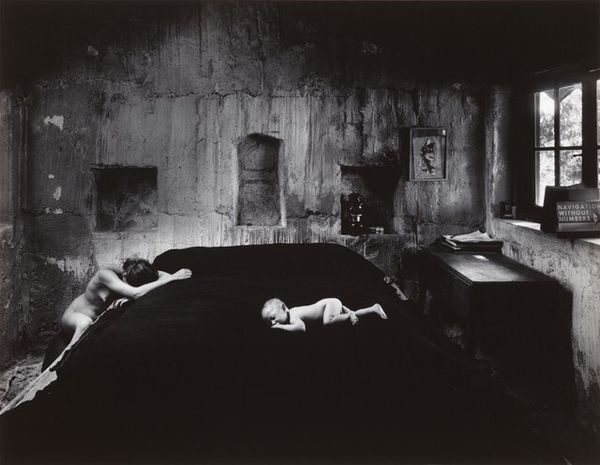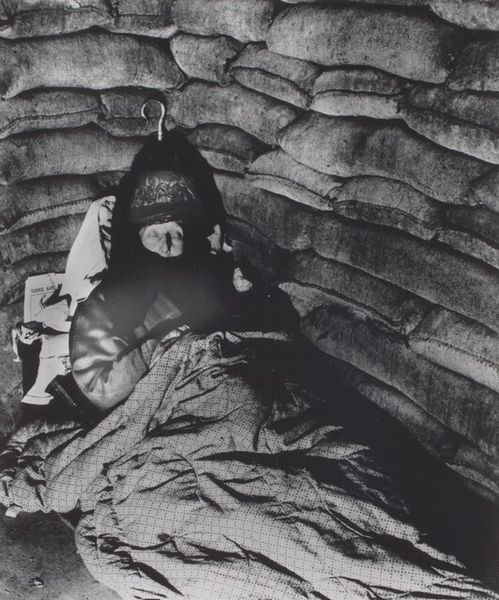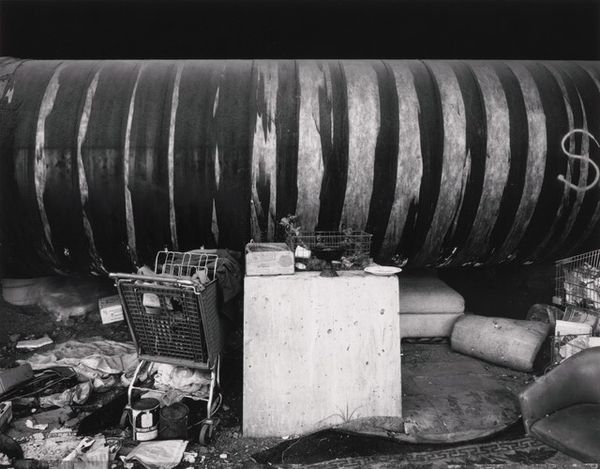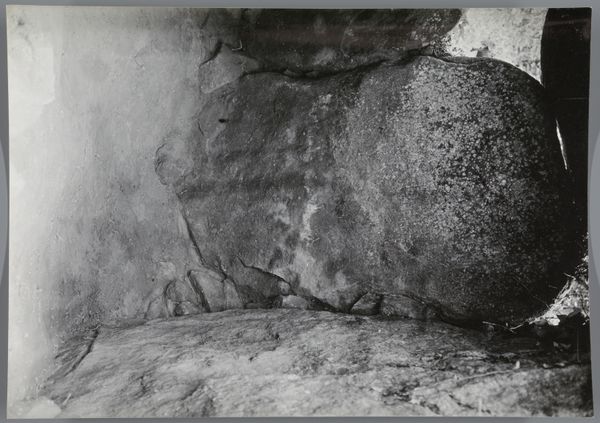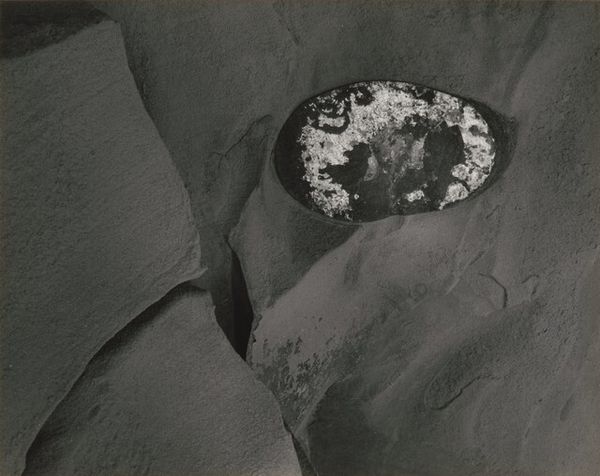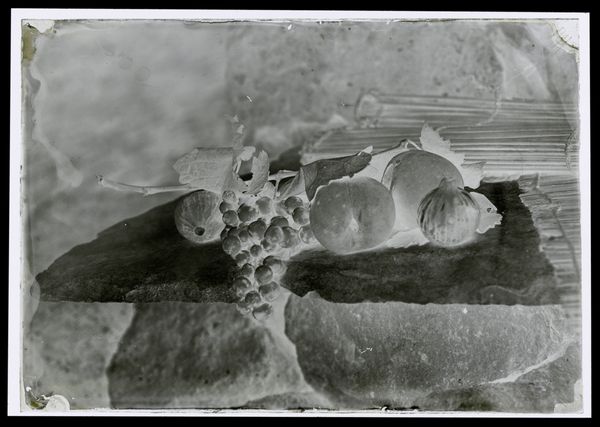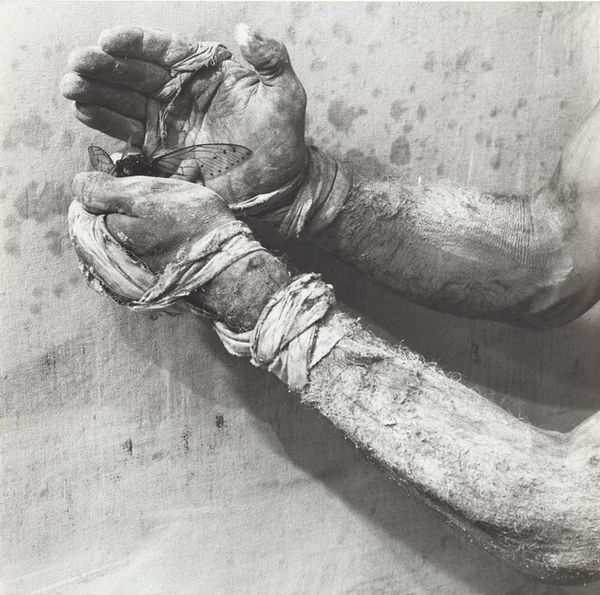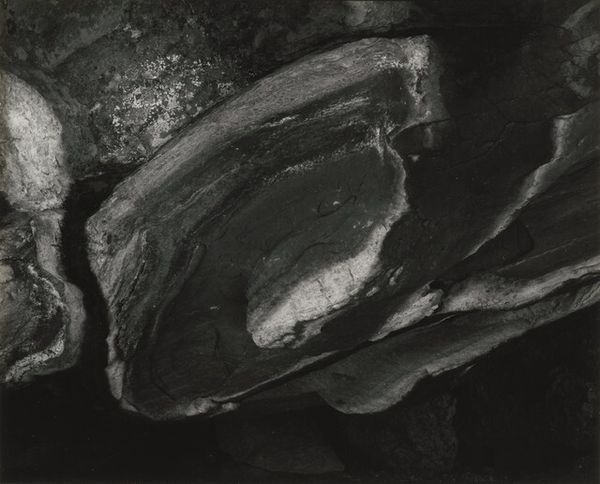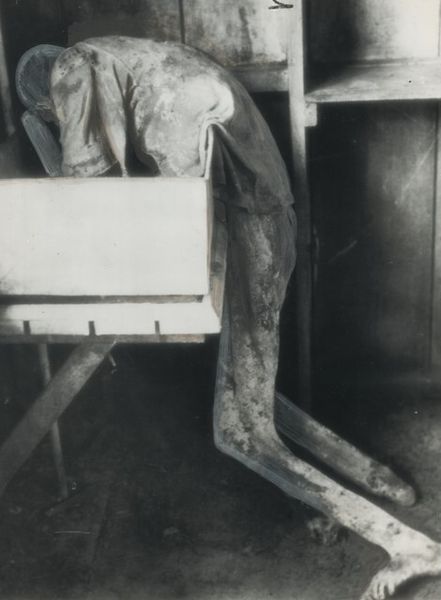
Benjamin Boofer, Shenango Ingot Molds (Working People series) 1977
0:00
0:00
photography, gelatin-silver-print
#
portrait
#
still-life-photography
#
black and white photography
#
black and white format
#
social-realism
#
dark monochromatic
#
photography
#
black and white theme
#
black colour
#
dark shape
#
black and white
#
gelatin-silver-print
#
monochrome photography
#
monochrome
#
realism
#
shadow overcast
Dimensions: image: 17.9 x 17 cm (7 1/16 x 6 11/16 in.) sheet: 25.3 x 20.3 cm (9 15/16 x 8 in.)
Copyright: National Gallery of Art: CC0 1.0
Curator: This is Milton Rogovin’s photograph, "Benjamin Boofer, Shenango Ingot Molds," from 1977, part of his series, "Working People." It’s a gelatin silver print. Editor: Immediately, I feel this raw claustrophobia. The frame is consumed by brutal geometry, shadows pressing in on this lone figure, a worker engulfed by the very structures he seems to be maintaining. Curator: Rogovin was deeply committed to documenting the lives of working-class people, often in industrial settings. He aimed to show respect and dignity, even in harsh environments. There's a distinct social-realist approach. Editor: Yes, it feels documentary, unvarnished. The man's hunched posture speaks volumes—the unseen weight of labor, the weariness. But look at the texture! The pitted, scarred surface of the mold almost seems alive, like a prehistoric beast he’s tending to. Curator: Exactly, the location, a steel mill, it's critical to understand the larger socio-economic context. These mills were vital, but also hazardous, central to debates about labor rights and the human cost of industry. Rogovin provides an important historical record, countering the sanitized, celebratory images often propagated. Editor: It’s so affecting. He seems small and incredibly powerful against such scale. A tiny, dedicated figure in near darkness armed with little more than his lamp. I keep thinking, is it a prison or a protective shell, this strange architecture? It makes me consider a larger question. Is his work dehumanizing or integral to his identity? Curator: Both, I would argue. Rogovin knew these contradictions intimately. He saw the toll exacted by industry, but also the pride and resilience within these communities. Photography became a means to address that. Editor: It's stayed with me... a stark reminder of the physical reality that underpins so much of modern life. Curator: Absolutely, seeing work and workers from a specific place and moment invites reflection on contemporary concerns, globalization, deindustrialization. This one image spurs countless questions and stories about work today.
Comments
No comments
Be the first to comment and join the conversation on the ultimate creative platform.


